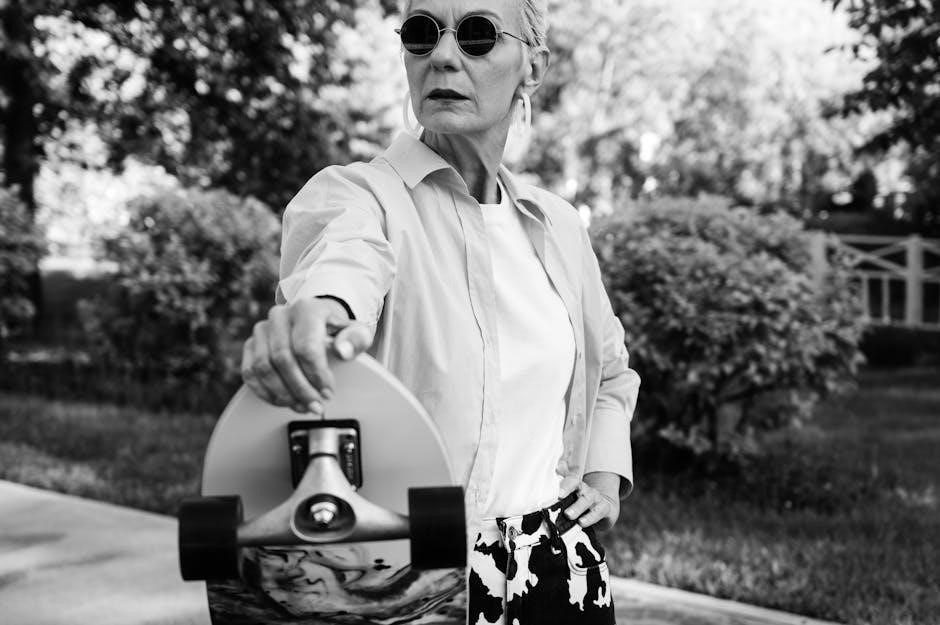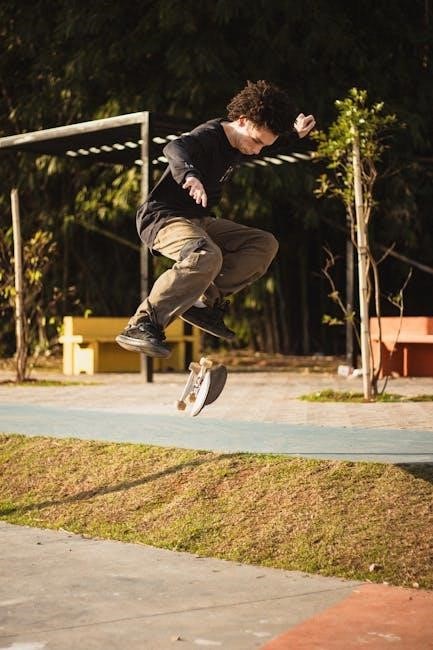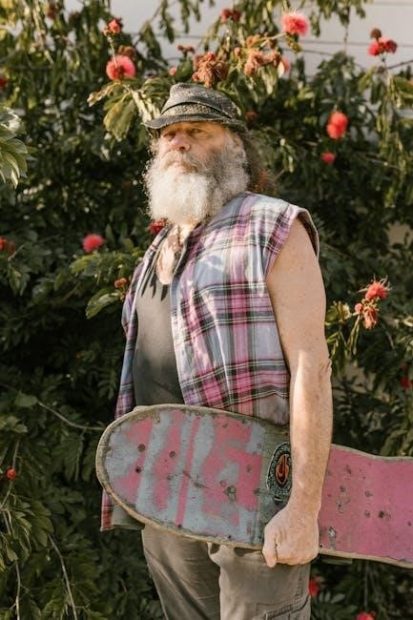Skateboard bushings are small‚ circular pieces of urethane designed to fit around the kingpin in skateboard trucks. They absorb shock‚ enhance stability‚ and improve control during rides. Essential for smooth turning and maneuverability‚ bushings play a vital role in tailoring the board’s responsiveness to individual skating styles and preferences. Understanding their function and importance is key to optimizing your skateboard’s performance and overall riding experience.
1.1 What Are Skateboard Bushings?
Skateboard bushings are small‚ circular urethane components fitted around the kingpin in skateboard trucks. They act as cushions‚ enabling smooth pivoting and absorbing shocks for enhanced stability and control. Available in various hardness levels‚ bushings influence the board’s turning responsiveness‚ with softer ones offering easier turns and harder ones providing stability at higher speeds. Their durability and elastic properties make them essential for a comfortable and maneuverable ride‚ adapting to different skating styles and terrains.
1.2 The Role of Bushings in Skateboard Performance
Skateboard bushings play a crucial role in enhancing performance by absorbing shocks‚ enabling smooth turns‚ and maintaining stability. Made from urethane‚ they cushion the kingpin‚ allowing the truck to pivot effortlessly. Softer bushings provide easier turning‚ while harder ones offer stability at higher speeds. Their responsiveness directly impacts the board’s maneuverability‚ making them essential for tailoring the ride to individual skating styles and ensuring optimal control during tricks and cruising.

Types of Skateboard Bushings
Skateboard bushings come in various styles‚ including barrel‚ cone/tapered‚ and kingcone/eliminator. Each type offers unique performance characteristics‚ catering to different skating styles and preferences for stability and maneuverability.
2.1 Barrel Bushings
Barrel bushings are straight‚ cylindrical‚ and offer excellent stability‚ making them ideal for heavier skaters or those seeking a more predictable ride. Their uniform shape ensures consistent pressure distribution‚ providing smooth‚ progressive lean without sacrificing responsiveness. This design is perfect for riders who prioritize stability over sharp turns‚ allowing for controlled‚ even flex in the trucks. Barrel bushings are a versatile choice for various skating styles and preferences.
2.2 Cone/Tapered Bushings
Cone or tapered bushings feature a narrower top and wider bottom‚ offering enhanced responsiveness and easier turning. Their shape allows for tighter‚ more precise maneuvers‚ making them ideal for technical skating and carving. Tapered bushings provide a progressive lean‚ meaning they stiffen as you turn‚ giving riders more control at higher speeds. They’re perfect for skaters who prioritize agility and quick directional changes over maximum stability.
2.3 Kingcone/Eliminator Bushings
Kingcone‚ or Eliminator‚ bushings are a single‚ large piece of urethane that wraps around the kingpin‚ offering exceptional stability and durability. Designed for heavier skaters or high-speed riding‚ they provide a progressive lean‚ stiffening as you turn for better control. Their solid construction minimizes compression and wear‚ making them ideal for riders seeking maximum support and a stable‚ predictable ride without sacrificing turning performance.

Bushing Hardness and Durometer Scale
Bushing hardness is measured using the durometer scale‚ typically ranging from 70A to 100A. Softer bushings (70-80A) offer easier turning‚ while harder options (90-100A) provide stability and speed.
3.1 Understanding the Durometer Scale
The durometer scale measures bushing hardness‚ ranging from 70A (soft) to 100A (hard). Softer bushings (70-80A) provide easier turning and more cushioning‚ ideal for carving and cruising. Harder options (90-100A) deliver stability and responsiveness‚ suited for speed and aggressive riding. The right durometer ensures optimal performance‚ balancing comfort and control based on skating style and preference.
3.2 Choosing the Right Hardness for Your Riding Style
Choosing the right bushing hardness depends on your riding style. Softer bushings (70-80A) are ideal for carving and cruising‚ offering more flexibility and cushioning. Harder bushings (90-100A) suit speed and downhill skating‚ providing stability and responsiveness. Experiment with different durometer ratings to find the perfect balance of comfort and control for your skating needs and preferences.

Bushing Shapes and Their Effects
Bushing shapes significantly influence skateboard performance. Tapered and barrel designs offer distinct turning characteristics‚ with tapered bushings providing progressive lean and barrel bushings enhancing stability for heavier riders.
4.1 Tapered vs. Barrel Bushings
Tapered bushings offer a progressive lean‚ ideal for responsive turns and maneuverability‚ while barrel bushings provide stability and are better suited for heavier riders or downhill skating. Tapered bushings allow for easier initiation of turns‚ making them perfect for carving and tricks. Barrel bushings‚ with their straight shape‚ deliver a more linear feel‚ enhancing overall stability and control. Choosing between them depends on your skating style and the type of riding you prioritize most.
4.2 Progressive vs. Linear Lean
Progressive lean offers increased responsiveness as pressure is applied‚ ideal for carving and dynamic maneuvers. Linear lean provides consistent resistance‚ maintaining stability and control‚ especially at higher speeds. Progressive lean suits riders seeking precise‚ adjustable turns‚ while linear lean is preferred by those prioritizing predictability and steadfast performance. The choice between them hinges on whether you value adaptability or consistency in your skating experience and the terrain you ride on.
Installation and Maintenance Tips
Proper installation ensures optimal performance‚ while regular maintenance extends bushing life. Cleaning and inspecting bushings prevents wear and tear‚ ensuring smooth‚ consistent rides and better control over time.
5.1 How to Install Bushings Properly
Proper bushing installation ensures smooth performance and longevity. Start by removing the kingpin nut and old bushings. Insert the new bushings‚ ensuring they fit snugly around the kingpin. Use spacers if needed for alignment. Tighten the nut gradually‚ alternating sides to avoid misalignment. Avoid over-tightening‚ as this can restrict movement. Finally‚ test the trucks by leaning to ensure proper movement and responsiveness. Proper installation prevents wear and ensures optimal performance.
5.2 Maintenance Tips for Longer Bushing Life
Regular maintenance extends bushing life and ensures optimal performance. Clean bushings with mild soap and water to remove dirt and grime. Avoid harsh chemicals that can degrade the urethane. Inspect for wear and tear‚ replacing them when they show significant damage or lose shape. Properly tighten the kingpin nut without over-tightening‚ as this can cause premature wear. Regularly check and adjust to maintain smooth functionality and longevity.

How to Choose the Right Bushings
Selecting the right bushings involves considering your riding style‚ weight‚ and skateboard type. Softer bushings suit lighter riders and carving‚ while harder ones offer stability for heavier skaters. Experiment with shapes and hardness to find the perfect balance for your setup.
6.1 Factors to Consider When Selecting Bushings
When choosing bushings‚ consider your riding style‚ weight‚ and skateboard type. Lighter riders may prefer softer bushings for easier turning‚ while heavier skaters benefit from harder ones for stability. Your skating style—whether cruising‚ carving‚ or downhill—also influences the ideal hardness and shape. Additionally‚ personal preference for responsiveness and lean play a crucial role in selecting the right bushings for your setup.
6.2 Balancing Stability and Maneuverability
Balancing stability and maneuverability is crucial for optimal performance. Softer bushings enhance maneuverability‚ making turns easier‚ while harder bushings provide stability‚ ideal for high speeds or heavy skaters. The durometer scale helps determine the right hardness. Tapered bushings offer a progressive lean‚ improving responsiveness‚ while barrel bushings deliver a more stable‚ predictable ride. Experimenting with different setups allows you to find the perfect balance for your skating style and preferences.
Top Brands and Recommendations
Top skateboard bushing brands include Bones‚ known for hardness and stability; Riptide‚ offering versatile options; and Orangatang‚ favored for durability in longboarding. Each provides unique benefits.

7.1 Recommended Bushing Brands
Top brands like Bones‚ Riptide‚ and Orangatang are highly regarded for their quality and performance. Bones bushings are celebrated for their hardness and stability‚ while Riptide offers versatile options for various skating styles. Orangatang bushings are popular among longboarders for their durability and smooth turning capabilities. These brands provide reliable choices for skaters seeking optimal control and responsiveness‚ catering to different preferences and riding needs.
7.2 Best Bushings for Different Skateboarding Styles
For cruising‚ softer bushings (78A-83A) provide a smooth ride. Carving and downhill require harder bushings (85A-89A) for stability. Street skating often uses medium hardness (84A-86A) for balance. Tapered bushings are great for responsive turning in carving‚ while barrel bushings offer stability for downhill. Softer setups are ideal for casual rides‚ while harder ones suit high-speed‚ aggressive styles. Top brands like Bones and Riptide offer reliable options. Experimenting helps find the perfect setup for your style.

Common Issues and Troubleshooting
Common issues with skateboard bushings include excessive wear‚ improper tightness‚ and uneven stress. Troubleshooting these problems can enhance skateboard performance and extend bushing life effectively.
8.1 Bushing Wear and Tear
Bushing wear and tear is common due to frequent use and stress from turning and impact. Signs include visible cracks‚ uneven surfaces‚ and loss of rebound. Harder bushings may resist wear longer but can feel less responsive‚ while softer ones may wear faster but offer better cushioning. Regular cleaning and inspection can help identify wear early‚ preventing further damage. Replacing worn bushings ensures optimal performance and safety. Proper installation and alignment also reduce uneven stress‚ extending their lifespan.
8.2 Solving Common Bushing-Related Problems
Common bushing issues include excessive wear‚ poor responsiveness‚ and uneven alignment. To address these‚ ensure proper installation‚ avoid over-tightening the kingpin nut‚ and clean bushings regularly. Replacing worn or damaged bushings promptly can restore performance. Using the correct bushing hardness for your weight and style helps prevent premature wear. Aligning trucks properly reduces stress on bushings‚ ensuring smoother turns and better overall functionality.
Electric Skateboard Bushings
Electric skateboard bushings require specific setups for enhanced stability and control at higher speeds. Stiffer bushings are often recommended to handle the power and weight effectively‚ ensuring optimal performance.
9.1 Specific Needs for Electric Skateboards
Electric skateboards require stiffer bushings to handle higher speeds and heavier loads. A harder durometer rating (95A-101A) is recommended for better stability and reduced wobble. The added torque from electric motors demands bushings that can maintain control during acceleration and braking. Proper bushing selection ensures a smoother‚ more responsive ride‚ balancing stability and maneuverability for optimal performance on electric setups.
9.2 Installation Tips for Electric Skateboard Bushings
When installing bushings on an electric skateboard‚ ensure the area is clean and free of debris. Align the bushings properly with the kingpin and tighten gradually. Avoid overtightening‚ as this can restrict movement. Test the board at low speeds to ensure stability and responsiveness. Always follow the manufacturer’s guidelines for torque specifications to prevent damage and ensure optimal performance.
Skateboard bushings are vital for optimal performance‚ balancing stability and control. Proper selection and regular maintenance ensure a smooth‚ responsive ride tailored to your skating style.
10.1 Final Thoughts on Skateboard Bushings
Skateboard bushings are a crucial component that directly impacts your riding experience. Experimentation is key to finding the perfect setup that matches your style and preferences. Whether you prioritize stability‚ maneuverability‚ or a balance of both‚ the right bushings can elevate your performance. Remember‚ trial and error are essential‚ as every skater’s needs are unique. Regular maintenance and adjustments will ensure your bushings continue to deliver optimal results‚ keeping your rides smooth and enjoyable.
10.2 Encouragement to Experiment and Find Your Perfect Setup
Experimentation is key to unlocking your skateboard’s full potential. Don’t hesitate to try different bushing setups to discover what works best for you. Every rider’s style is unique‚ and the right combination of hardness and shape can transform your skating experience. Be patient‚ stay curious‚ and remember‚ there’s no one-size-fits-all solution. Keep tweaking until you find the perfect balance of stability and responsiveness that makes your rides unforgettable.
